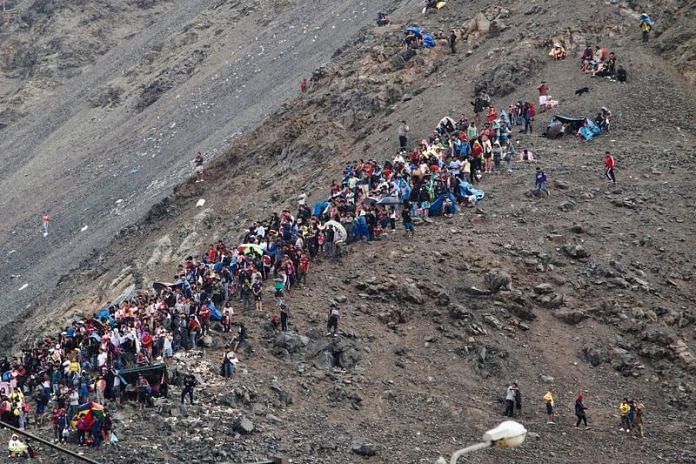(Reuters) – The death toll from a massive landslide that struck southern Peru rose to at least 15 on Tuesday, according to a government tally, after dozens of homes were swallowed up by dirt and mud following heavy rainfall last weekend.
Another 20 people were injured after the landslide struck on Sunday near the riverside town of Secocha, about 125 miles (200 km) northwest of the city of Arequipia. Another two people are missing, officials said.
At least 10 homes were destroyed, according to national emergency services, although that number appeared likely to grow significantly, along with 310 homes reported damaged so far.
Video of the landslide captured one sloping town street transformed into a running river of mud, rocks and debris, with homes and other structures torn down immediately upon contact. Locals could be heard shouting at those in its path to run.
Arial footage from above Secocha by local outlet Radio Victoria showed larges parts of nearby hillsides scrubbed of any vegetation, with huge piles of earth at the bottom where houses once stood.
William Alvarado, a district mayor in one of the hardest-hit area, said over 1,000 families had been affected, almost all of them severely.
“We can say that the houses of 90% of the affected families were completely destroyed,” he said.
President Dina Boluarte flew over the disaster zone on Tuesday morning to survey the damages.
At an afternoon news conference in Arequipa, she offered her condolences to the victims, ticked off early government efforts to help, and noted that past landslide clean up efforts have too often suffered major delays.
“We will now show a big difference on that so that in the shortest amount of time we can recover as fast as possible,” she said.
Along with local officials, Boluarte posed for pictures in front of piles of supplies set for distribution.
The deadly landslide follows two months of intense political upheaval in the country marked by often violent anti-government protests aimed at Boluarte’s caretaker government.
The unrest is largely centered in nearby areas in Peru’s Andean south and was triggered by the early December ouster of former President Pedro Castillo.
(Reporting by David Alire Garcia; Editing by Marguerita Choy)
Disclaimer: This report is auto generated from the Reuters news service. ThePrint holds no responsibilty for its content.



